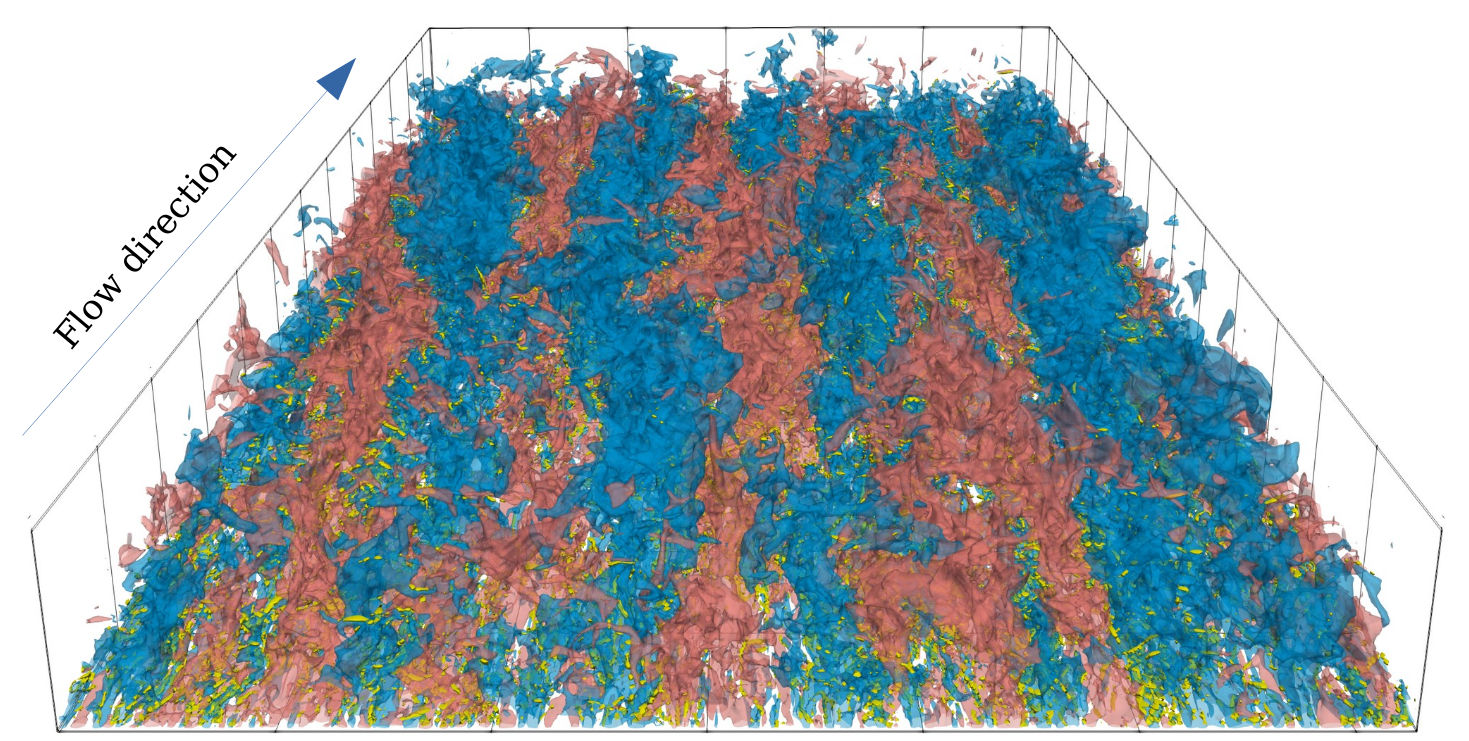Interactions between superstructures and other scales of turbulent flows
- contact:
- funding:
DFG SPP1881 "Turbulent superstructures"
- startdate:
2020
Vortical structures of different sizes can be observed in turbulent wall-bounded flows. The smaller ones are mainly found near the wall and are thought to keep turbulence alive in a self-sustaining cycle; the largest ones (sometimes referred to as superstructures) dominate the heat, mass and momentum transport in most flows of engineering interest. Understanding the way vortices of different size originate and interact is still an open problem, and is of paramount importance to improve our ability to model, predict and control turbulent flows. Moreover, the latest developments in literature show that controlling large vortices is a viable energy-saving strategy whose practical realisation is easier than controlling smaller ones.
In this project, we numerically study the impact of superstructures on wall-bounded flows, either in terms of their impact on the cost of driving the flow or in terms of interaction with smaller scales. Specifically, we investigate the mechanism by which superstructures increase the energy spent by the flow and we perform numerical experiments to shed light on the known scale-interaction mechanism of amplitude modulation. Additionally, we study how vortical structures of different sizes are formed in time, to try and shed light on the mechanisms through which superstructures are produced and sustained.

Figure: Visualisation of near-wall small scales vortices (yellow) and turbulent superstructures, visible here as region of positive (red) and negative (blue) large-scale velocity fluctuations. The flow is a turbulent channel at Reτ=1000.
